Archeogeophysical Surveying and Excavation at 3YE347
George Sabo III and Jami J. Lockhart
Arkansas Archeological Survey
We began our program of archeogeophysical surveys at sites in the Carden Bottoms study area with work at the McClure site (3YE347). This site was tested in 1992-1994 by Survey research station archeologist Dr. Leslie (Skip) Stewart-Abernathy and members of the Arkansas River Valley chapter of the Arkansas Archeological Society. At that time, a large feature filled with cultural debris (artifacts, animal bone, and carbonized plant remains) was discovered and partially excavated. Most of the artifacts found during the excavations represent the ca. A.D. 1500 - 1700 Carden Bottoms phase. The presence of European trade goods in the feature, including brass and glass beads and an iron knife blade, indicates contact and interaction with European explorers. In light of these findings, and in relation to our current interest in further investigations at Carden Bottoms phase sites, plans were made to conduct additional excavations at the site as part of the June, 2009 Arkansas Archeological Survey/Arkansas Archeological Society training program.
To provide additional guidance for the planned excavations, we began our work at the site in October, 2008. The Survey crew included Mike Evans, Jerry Hilliard, Aden Jenkins, Duncan McKinnon, Jared Pebworth, Larry Porter, George Sabo, Skip Stewart-Abernathy, Leslie Walker, and Rebecca Wiewel. Several Arkansas River Valley chapter members also came out to help.
The first step was to create a permanent datum geo-referenced to the UTM NAD83 coordinate system. From this point we extended a comprehensive site grid system within which we can integrate past and future archeological survey and excavation areas. We then collected high-accuracy GPS coordinates for several key grid points. This enabled us to create a Geographic Information System (GIS) application for the project that includes high-resolution data layers including a 10-meter (x-y) digital elevation model for the site accompanied by geo-referenced true-color and color-infrared aerial photos.

|
|
Permanent datum point for 3YE347 site grid.
|
Returning to the site in February, 2009, we used a laser-driven total station to project the grid system from the permanent datum monument, establishing 20 meter grid points across the site. We marked the general location of Stewart-Abernathy’s previous excavations and selected several overlapping and adjacent areas for geophysical survey.
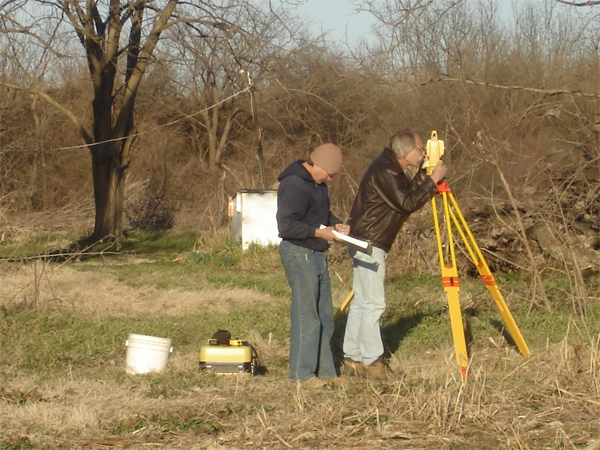
|
|
Jerry Hilliard and Larry Porter using total station to lay out site grid.
|
We then conducted gradiometer and electrical resistance surveys that revealed Stewart-Abernathy’s previously excavated test units along numerous other well-defined anomalies.

|
|
Alan Smith and Tammi Evans conducting a resistivity survey.
|
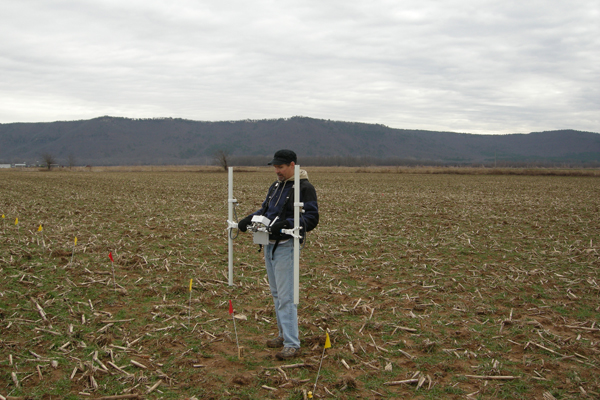
|
|
Jami Lockhart conducting a gradiometer survey.
|
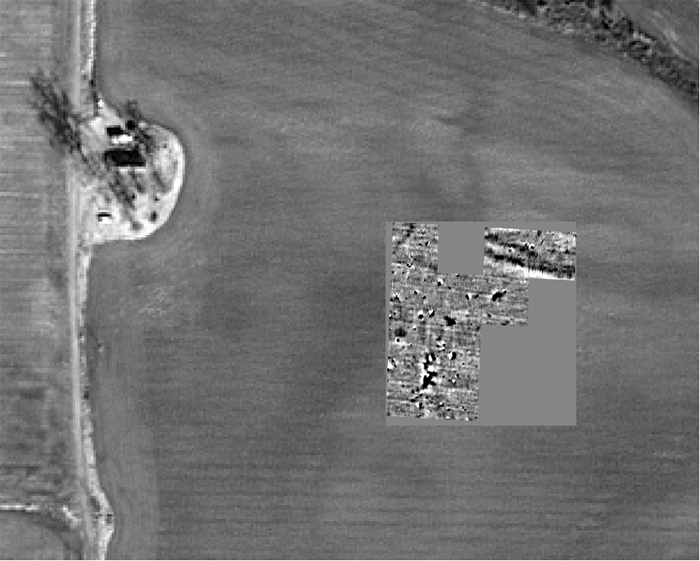
|
|
Map of anomalies detected by gradiometry superimposed on aerial photograph of site.
|
Exploratory, small-scale excavation units verified several of the anomalies as archeological features. One set of large, circular anomalies turned out to be refuse-filled pits. Another set of anomalies represent the floor area and associated debris scatters from a burned and collapsed building. These are the kinds of features we want to excavate to produce material evidence concerning Carden Bottoms phase lifeways.
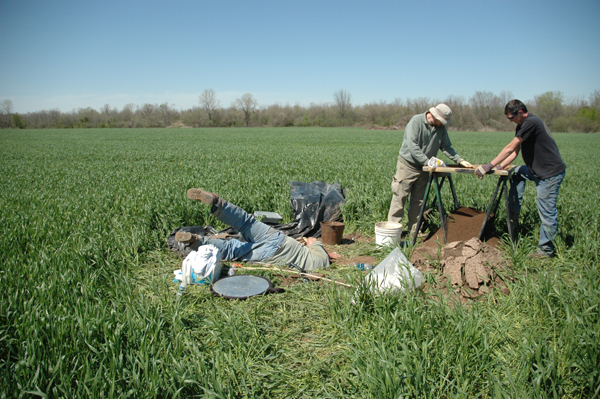
|
|
Duncan McKinnon and Aden Jenkins screening sediments excavated by Jared Pebworth.
|
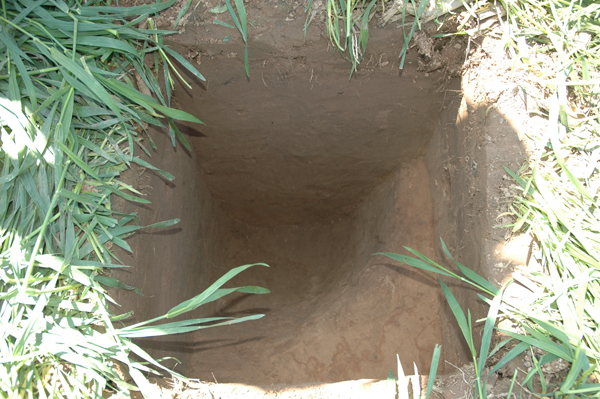
|
|
Refuse pit feature exposed in bottom of 50 x 50 cm test unit.
|

|
|
Anomalies detected in gradiometry survey. Small grid units measure 2 meters on a side.
|

|
|
Anomalies detected in resistivity survey. Small grid units measure 2 meters on a side.
|
Excavations conducted during the June, 2009 training program concentrated on the refuse-filled feature identified during Stewart-Abernathy’s 1992-1994 preliminary work at the site. This turned out to be a natural ravine filled with trash from the adjoining occupation area. The excavations produced an excellent sample of Carden Bottoms phase material remains. Combined with the material collected during the 1992-1994 excavations, this is the first such assemblage acquired under modern, controlled excavation procedures.
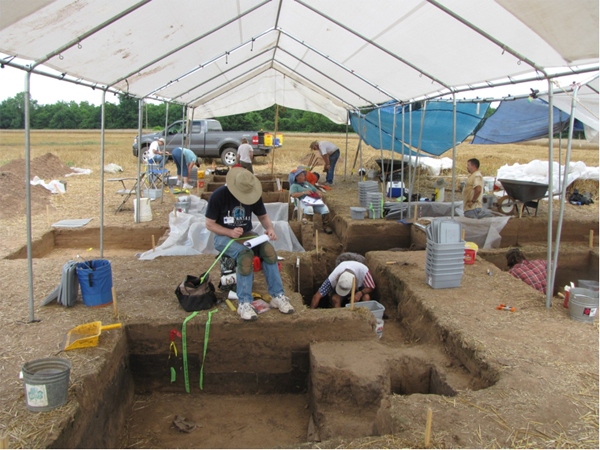
|
|
2009 excavations at the McClure Site (3YE347).
|
Preliminary processing of the material recovered during the 2009 excavations at 3YE347 was completed by Stewart-Abernathy's team at the WRI research station during the winter of 2009 and the spring of 2010. A more detailed analysis of this material is currently underway at the UAF research station. |











